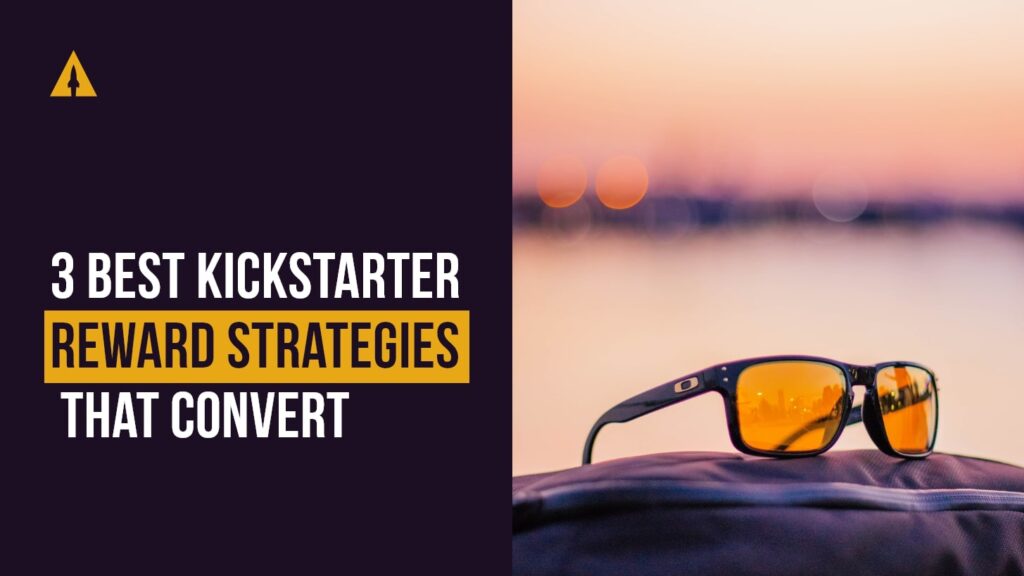
So, you’ve decided to launch your product on Kickstarter. There are several reasons why you might choose Kickstarter over Indiegogo, but one thing is the same: you want to maximize your earnings however you can. And with all the mayhem involved with launching a crowdfunding campaign, reward strategy too often becomes an afterthought for creators.
I get it. There are so many exciting and hands on tasks to do. The last thing you want to do is dive into a spreadsheet and figure out your pricing strategy. And when you do sit down to figure it out, you find yourself asking:
- How much should I discount?
- How many rewards should I have?
- Should I create a $1 reward?
- Kickstarter tells me the most popular reward is $25, is that right?
*Breathe*
I’ll help answer all those questions by breaking down reward strategies we use at LaunchBoom. Better yet, these reward strategies will actually be backed up by real data and use examples from some of our past six-figure campaigns.
Contents
Core principles of our reward strategy
Before diving into the weeds, let’s talk about some high-level concepts we follow for our reward strategy. Many of these principles are combined to have a more powerful effect.
| Discounting | We like to define the motivation for people to back our projects in one sentence: People looking to buy innovative products at a discount before anyone else.
Remember this, because it’s a core principle of one of our 3 reward strategies. |
|---|---|
| Price Anchoring | Anchoring is a cognitive bias where a person’s decision tends to be influenced by an initial piece of information. The most classic example of this is the restaurant that has one $155 dish while everything else is around $25. You see the $155 dish, say “Woah, that’s a lot”, then see the $25 dish and say “alright, that’s reasonable.” |
| Scarcity | A scarce product means that there is a limited supply. With a limited supply, humans are more likely to purchase the product because of the fear of missing out (FOMO). |
| Urgency | Like Scarcity, Urgency plays into FOMO but now we are talking about limited time instead of supply–and all crowdfunding campaigns are on a time limit. |
| Paradox of Choice | Sometimes, when faced with too many options, people have a harder time making a choice.
With this in mind, we strive to decrease choice in our reward structure to increase conversion. |
| Value Stacking | As the price goes up, so does the value! |
Now, let’s get into the 3 best reward strategies based on your product offering for your Kickstarter campaign.
Strategy #1: Discount Stacking (Single-product focus)
If you are launching just one product on Kickstarter, then I recommend a simple strategy I like to call Discount Stacking. With Discount Stacking, you will offer multiple tiers of rewards that are all selling the same product. The main difference is the discount offered for each reward and how long the reward is available for.
For example, let’s take a look at how we did The Empire ($491,410 raised).

Let’s break the rewards up into groups:
GROUP 1 — Single Pack Discount Stack
Launch Special — $114
- Quantity Available: 300
- Available Until: Midnight
After building our massive pre-campaign backer list, we start the campaign off with our heaviest discount to reward early backers and drive momentum. For Launch Day, we have a reward that ends at midnight and also has a limited quantity to really incentivize people to grab it before it goes away.
Day 2 Special — $115
- Quantity Available: 150
- Available Until: All of day 2 until midnight
We then bring back a huge discount (only $1 more) for the second day of the campaign.
Super Early Bird — $119
- Quantity Available: unlimited
- Available Until: From day 2 to day 14
After that, we open up a Super Early Bird tier that is only available until the first 2 weeks are up.
Early Bird — $125
- Quantity Available: unlimited
- Available Until: unlimited
After that is gone, the Early Bird opens up which is the reward we plan to sell for the remainder of the campaign.
Kickstarter Special — $155
- Quantity Available: unlimited
- Available Until: unlimited
We never actually plan to sell the Kickstarter Special as it is only there to serve as a price anchor.
GROUP 2 — Multi-Packs
Double Pack — $215
- Quantity Available: unlimited
- Available Until: unlimited
Four Pack — $395
- Quantity Available: unlimited
- Available Until: unlimited
We’ve found the most popular multi-packs to be 2 and 4 packs. When pricing these, we aim to make them a bigger discount than the best single-pack offer to incentivize backers to go to the higher reward level.
Strategy #2: The No-Brainer Deal (Low cost / high value add-on)
If you are selling a product that has an add-on that costs you very little to make but provides a lot of value to your customer, you have the opportunity to use the No Brainer Deal strategy.
For example, BaKblade 2.0 ($316,581 raised ) had the following items to sell:

- BaKblade 2.0 (includes 2 blades)
- 4 Extra Blades
The variability of the 4 pack allowed us to be creative with the bundles we created. The idea we came up with was the following:
Starter Pack — $24 (Save 30% off retail)
- BaKblade 2.0 (includes 2 blades)
Full Pack — $29 (Save 38% off retail)
- BaKblade 2.0 (includes 2 blades)
- 4 Extra Blades
The low price of the Starter Pack is enticing, but then you see the “Full Pack” for only $5 more and an even bigger savings off retail. This caused us to sell over 3 times as many Full Packs as Starter Packs. That’s what we call a No-Brainer Deal!
These kinds of deals are fantastic ways to increase your average order value. This principle will even carry you into eCommerce when you eventually decide to scale your business after crowdfunding.
Strategy #3 : Value Stacking (Multi-product focus)
If you have the ability to sell multiple standalone products, then I recommend using the Value Stacking strategy. In this strategy, we have less focus on the Discount Stacking method where the value goes down as the price goes up since the discount lessens. Instead, as the price goes up, so does the value offered.
For example, the Alpha Shovel ($177,496 raised) was able to offer all the following items:

- Alpha Shovel
- Stealth Shovel
- D-Grip
- Saw with T-Grip
- Stealth Shovel Head
So we turned these items into these bundles:
Alpha Shovel — $99
- Alpha Shovel
- D-Grip
Alpha Pack — $119
- Alpha Shovel
- D-Grip
- Saw w/ T-Grip
2 Heads Are Better Than 1 — $129
- Alpha Shovel
- D-Grip
- Stealth Head
Shovel Collection — $169
- Alpha Shovel
- D-Grip
- Stealth Shove
Whole Enchilada — $189
- Alpha Shovel
- D-Grip
- Stealth Shovel
- Saw w/ T-Grip
Each bundle offered more value to the backers which allowed us to raise a significant amount of money for each one of these rewards. Just make sure that you have enough inventory to support the demand. Selling a lot of bundles is great; not being able to fulfill your backers is something you want to avoid at all costs.
The strategies above have been tested and work because of their roots in the marketing principles discussed at the beginning. There is a lot of room for creativity in crowdfunding and I love that, but I highly recommend modeling what works unless you have some data to back up a new reward strategy.
If you find that you’re struggling to come up with reward strategies that will complement your product and crowdfunding campaign, we’re here to help. We love sharing our experience with product creators and entrepreneurs, so feel free to reach out to us any time!






